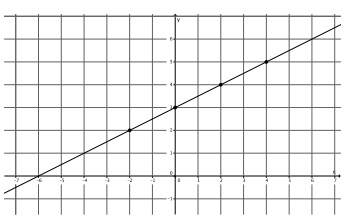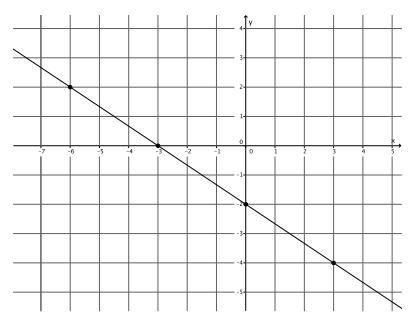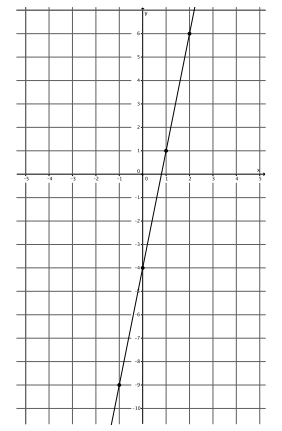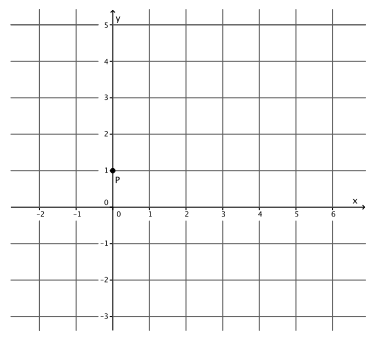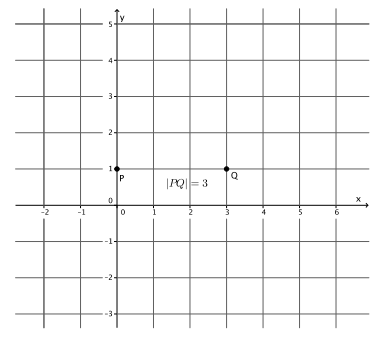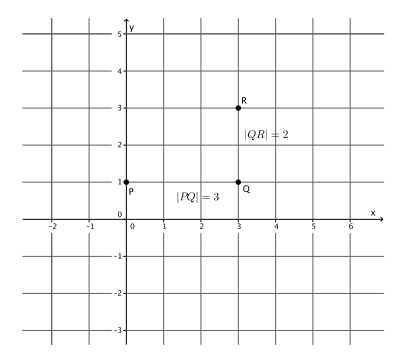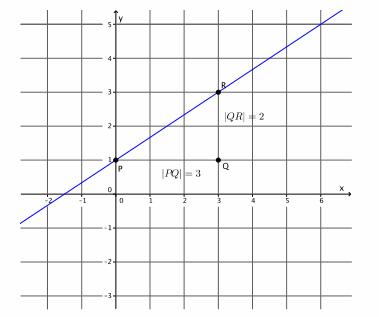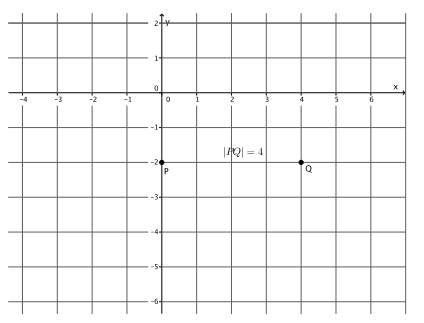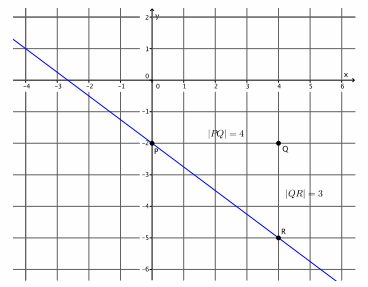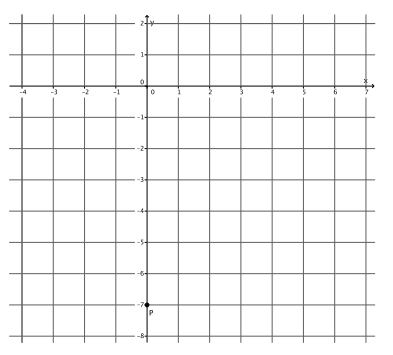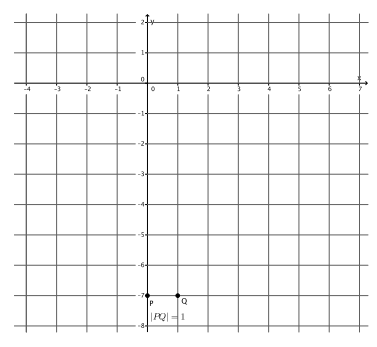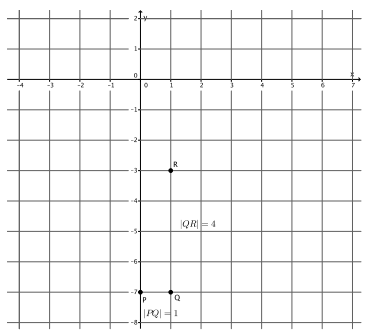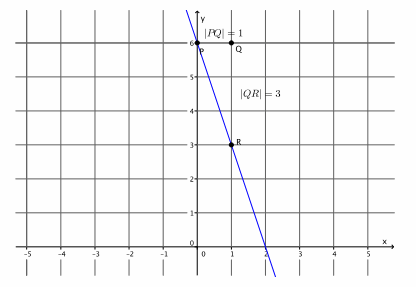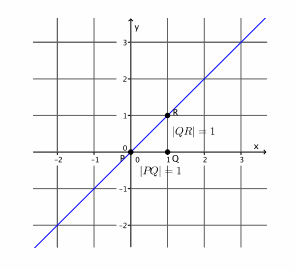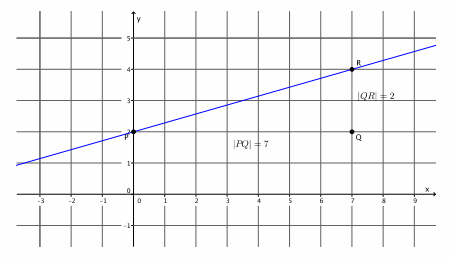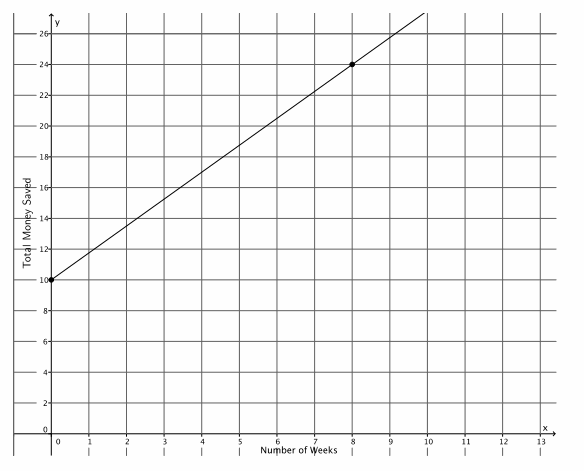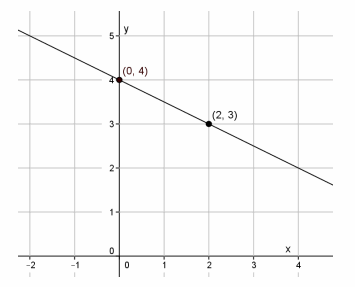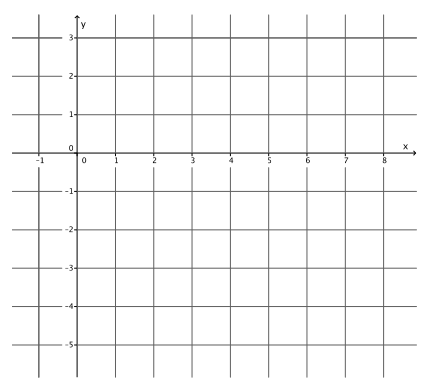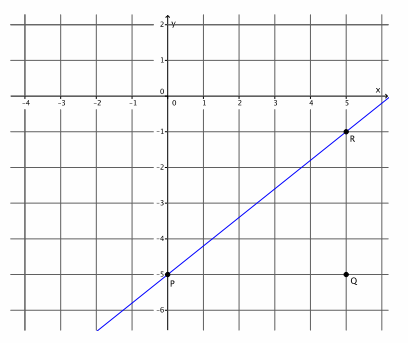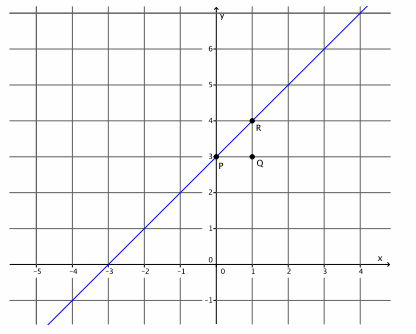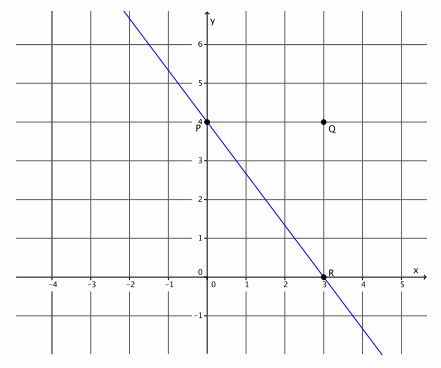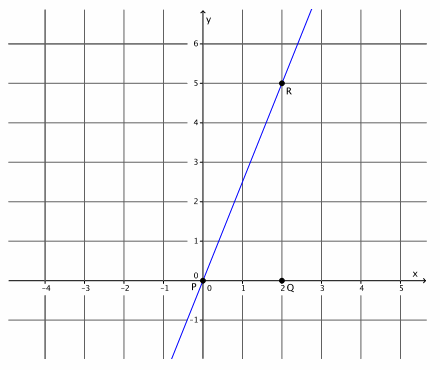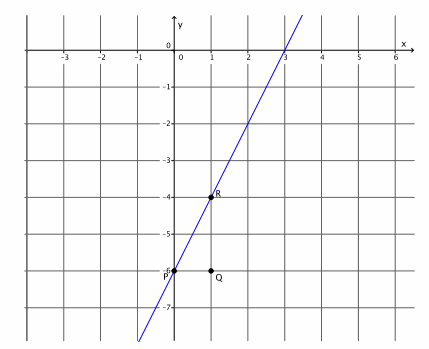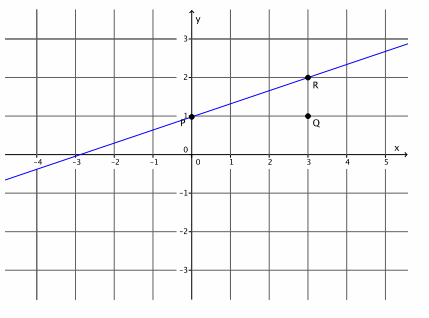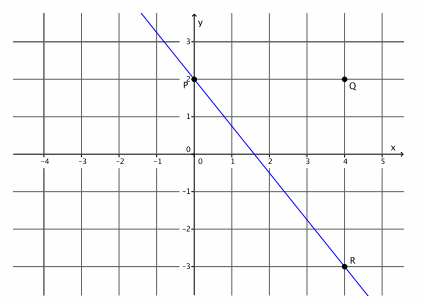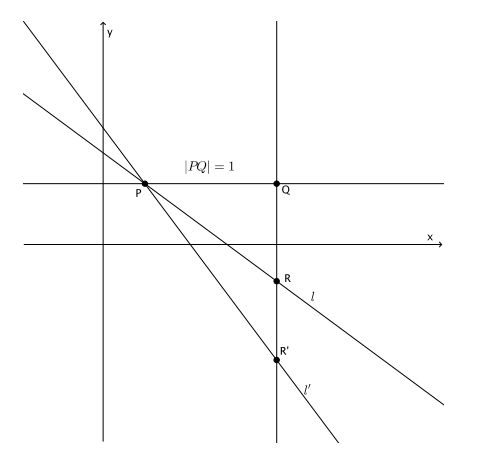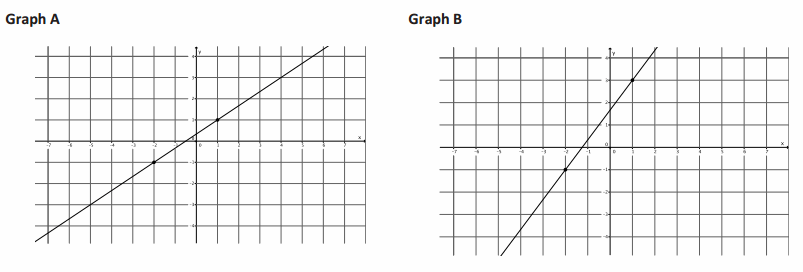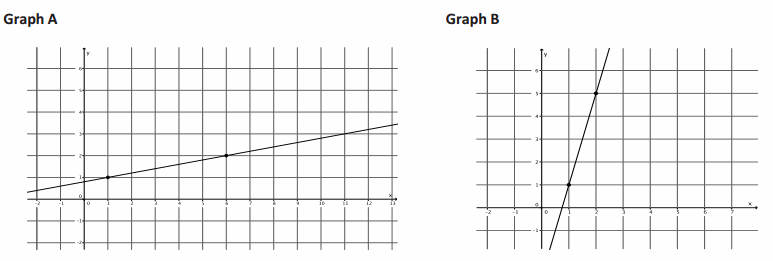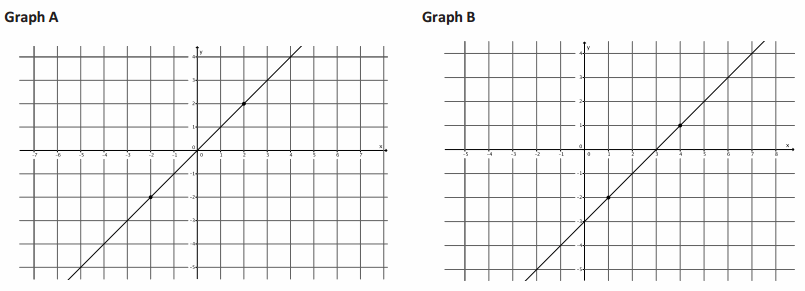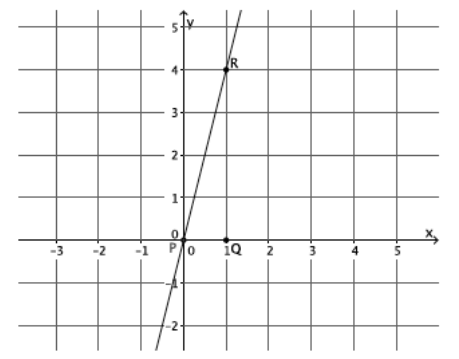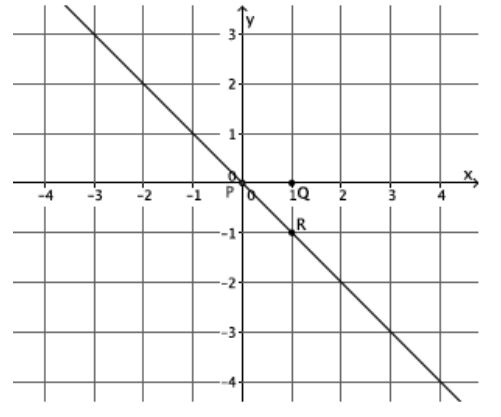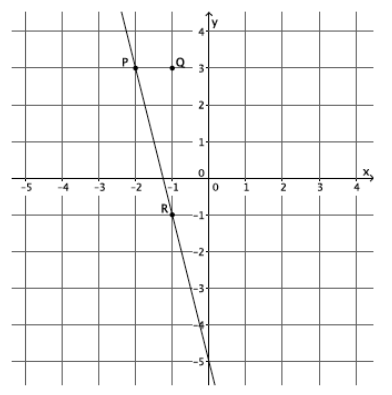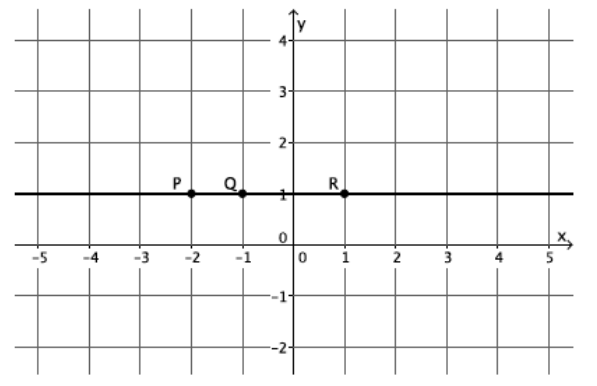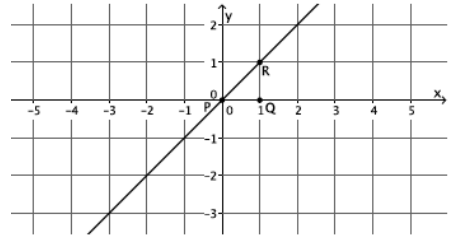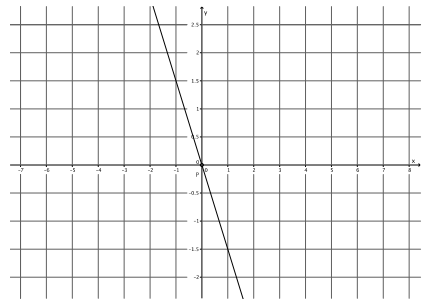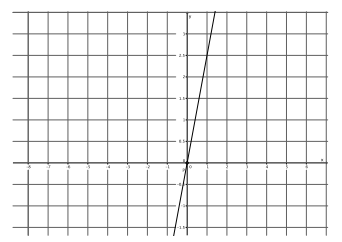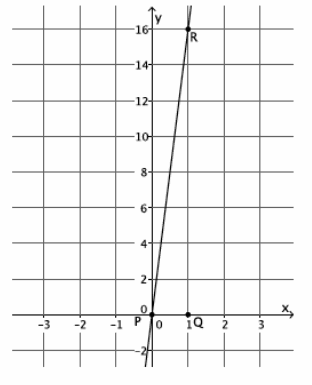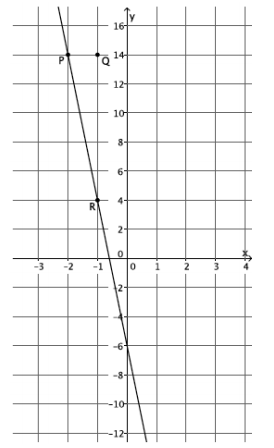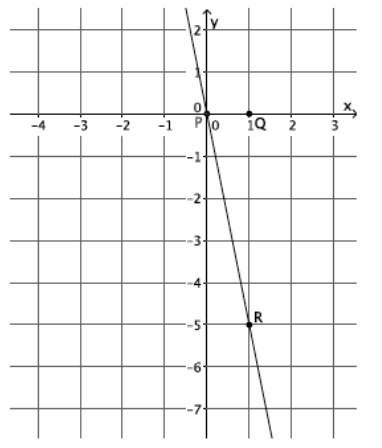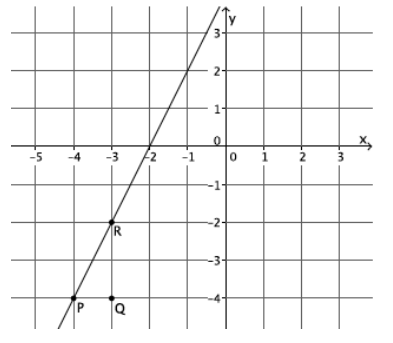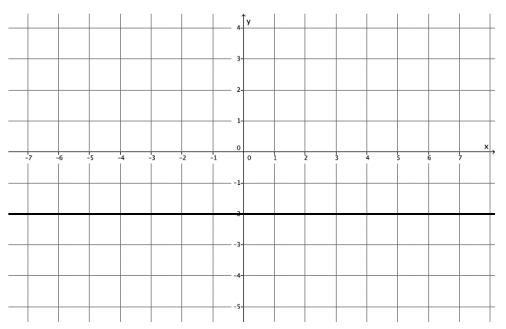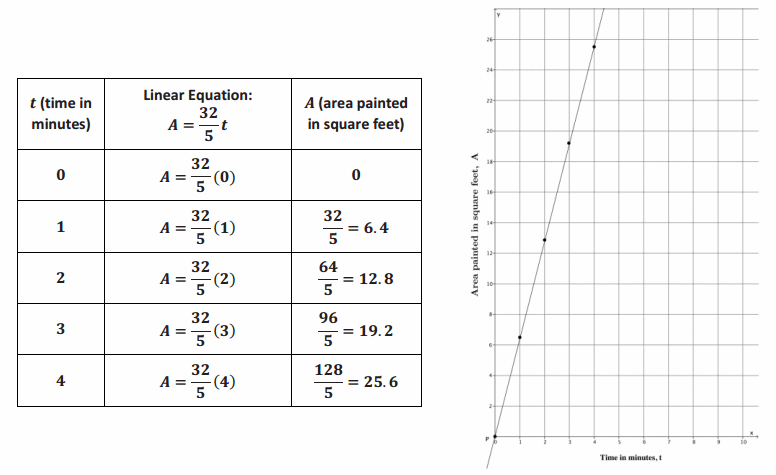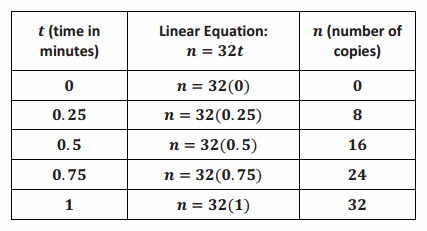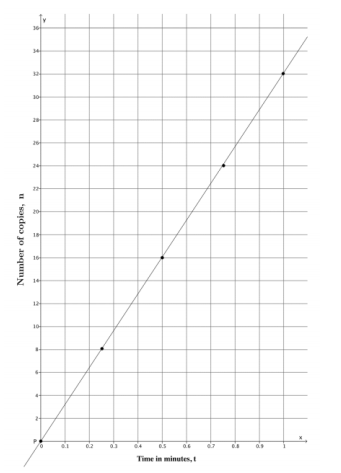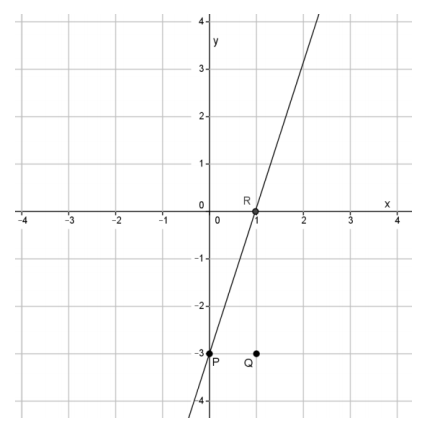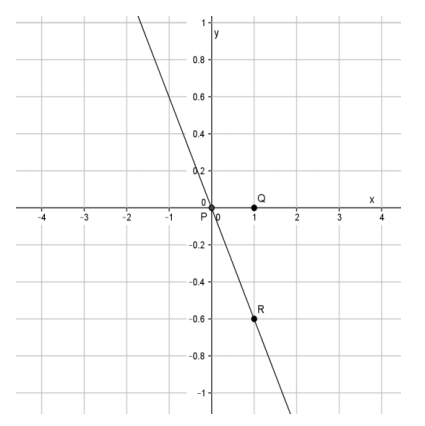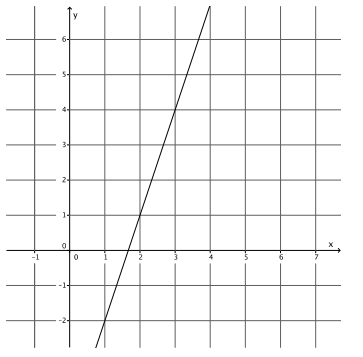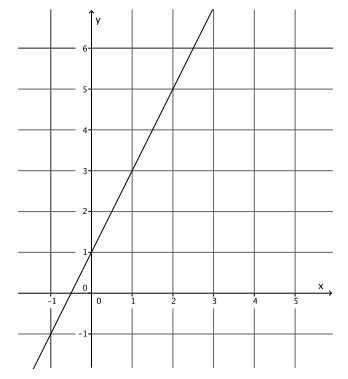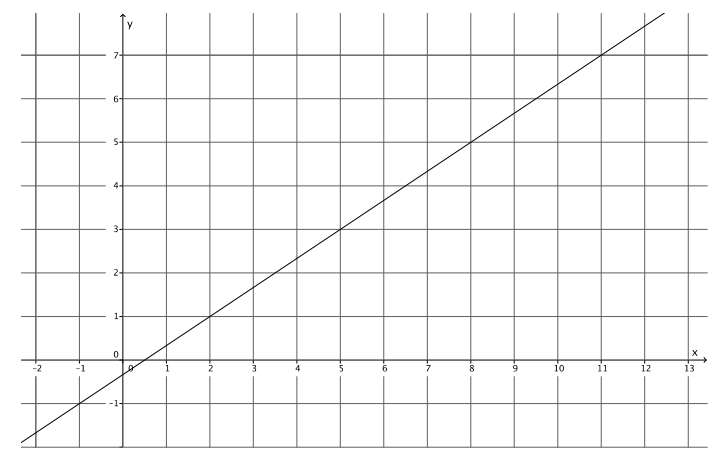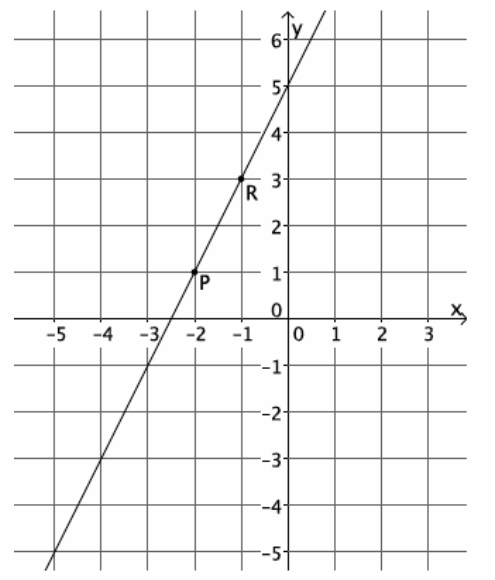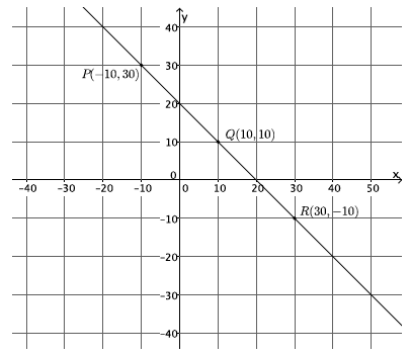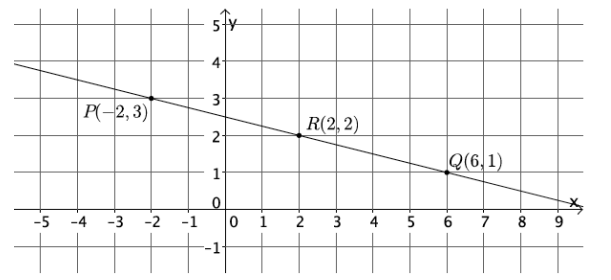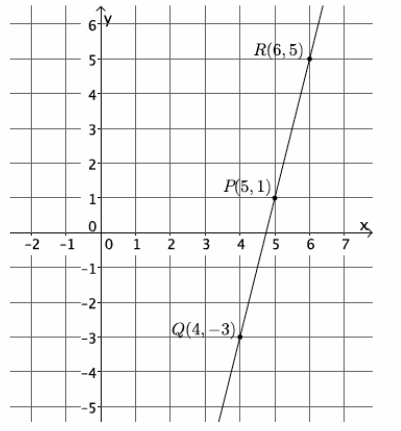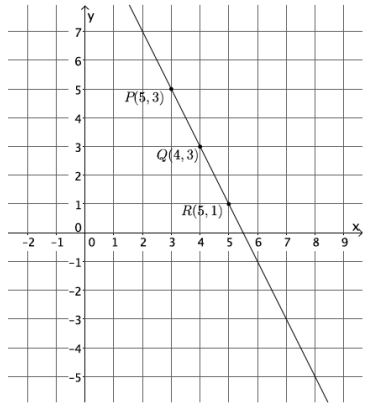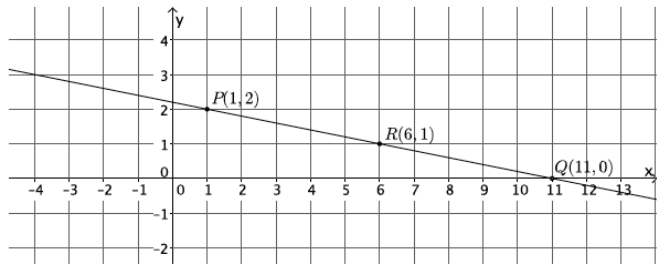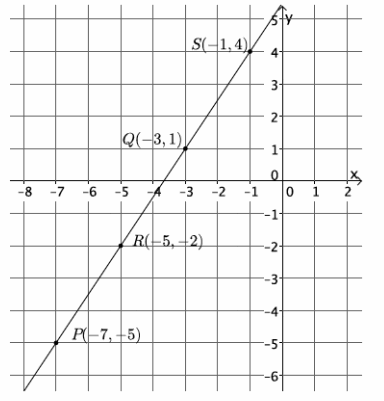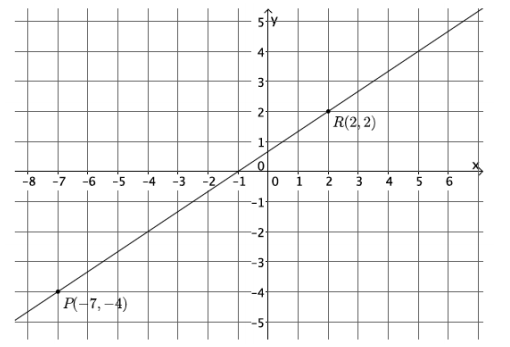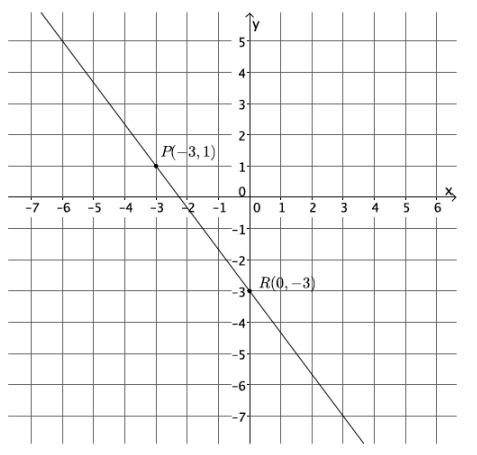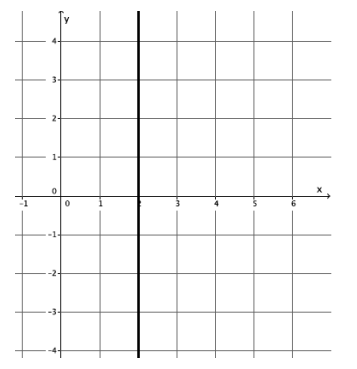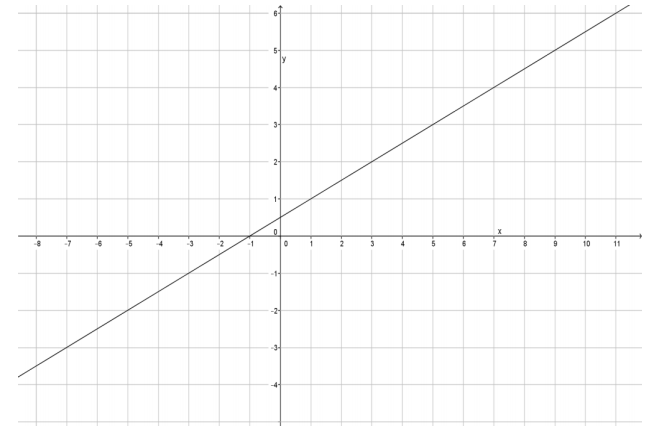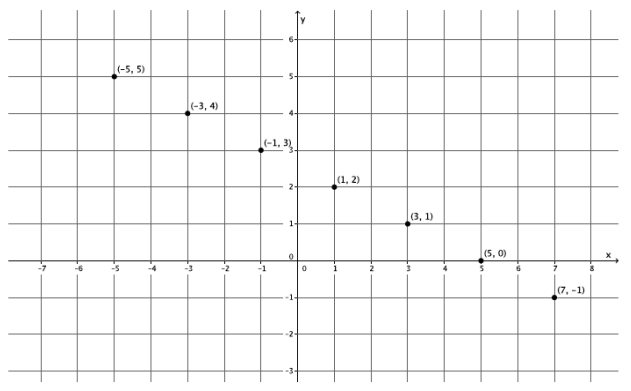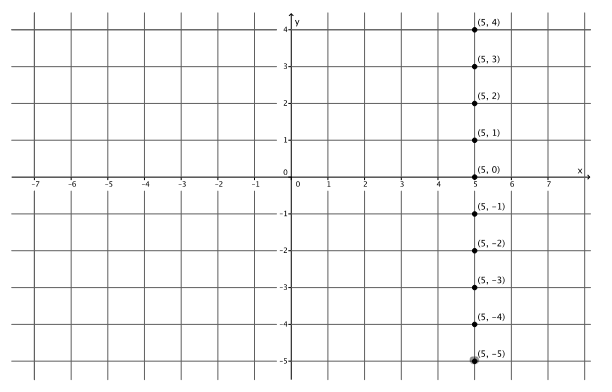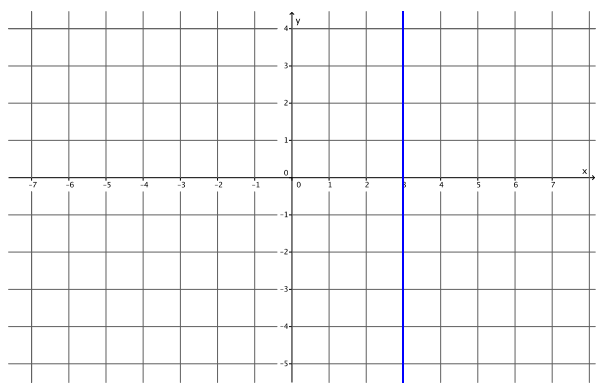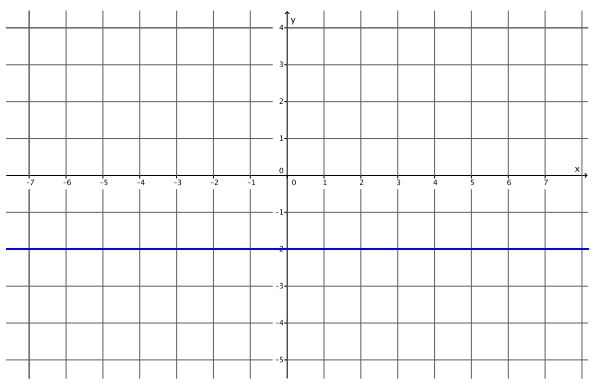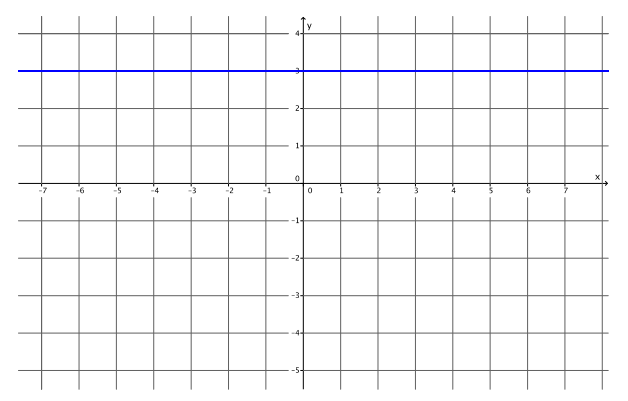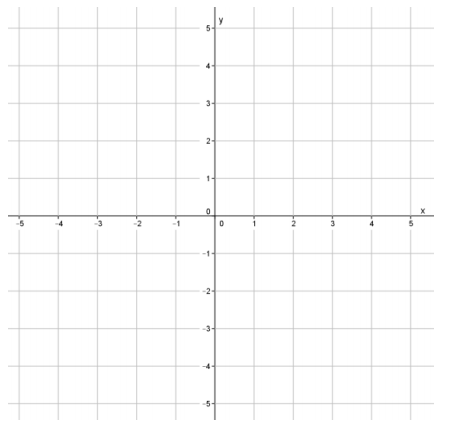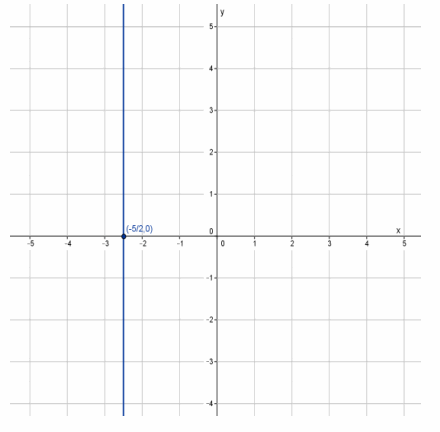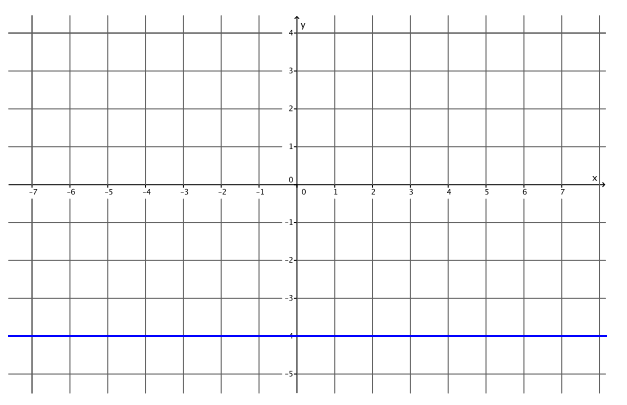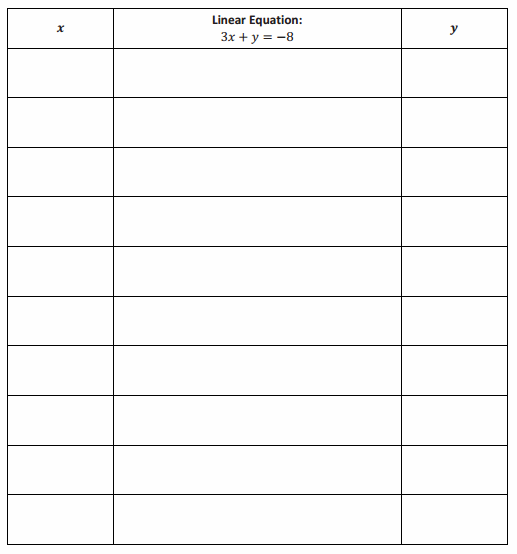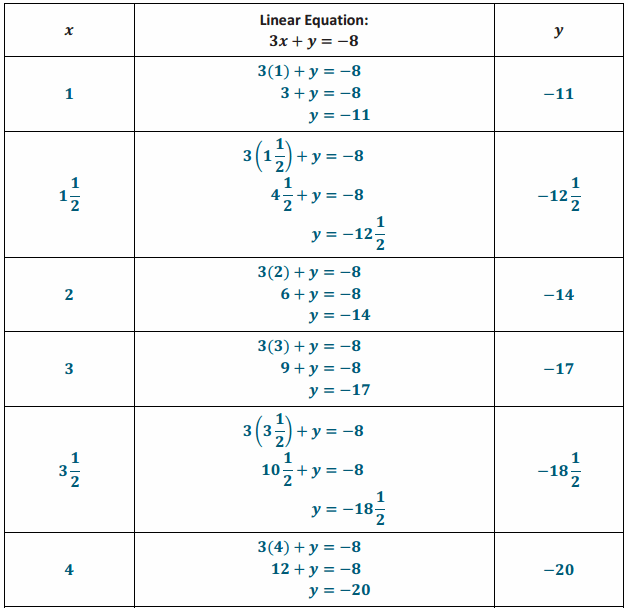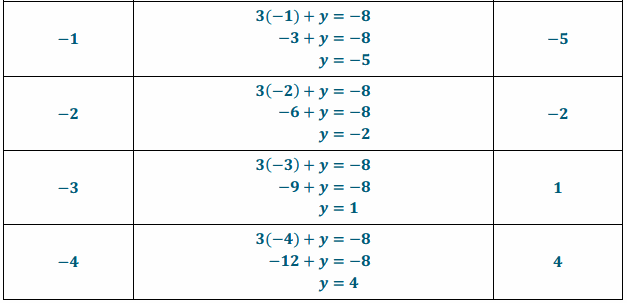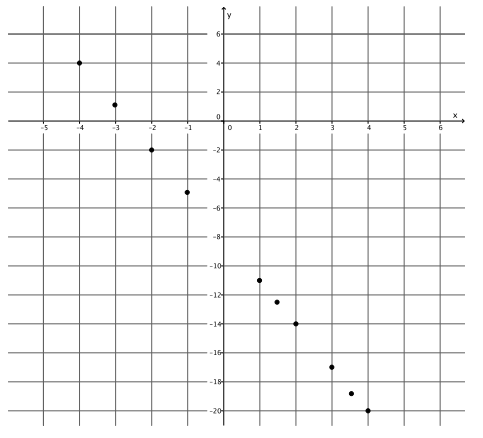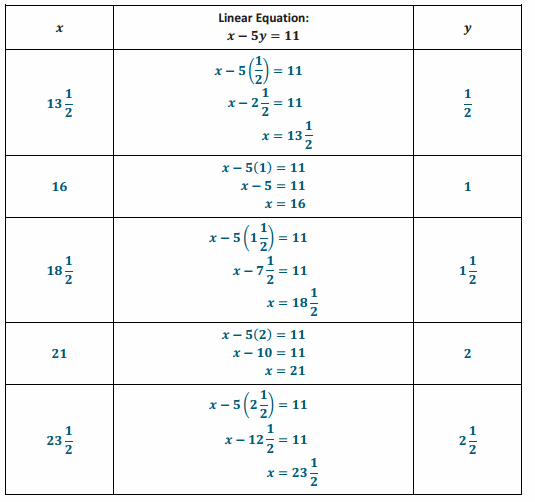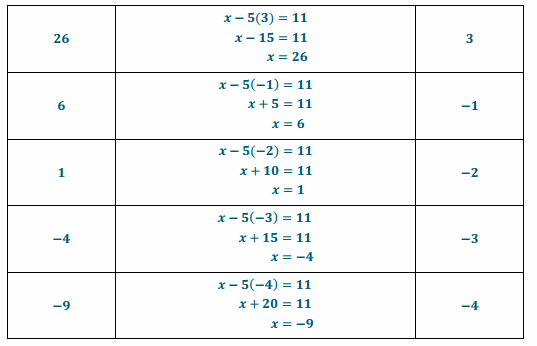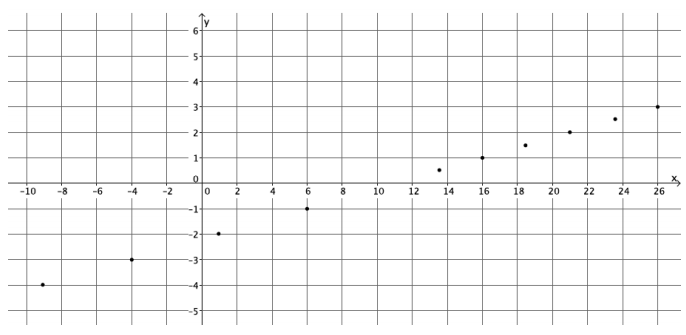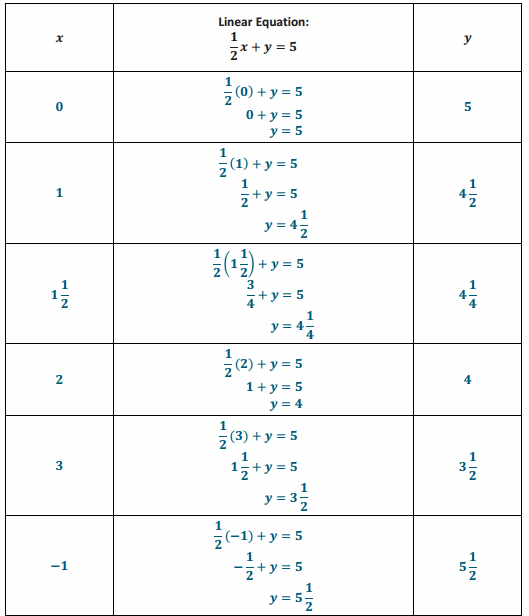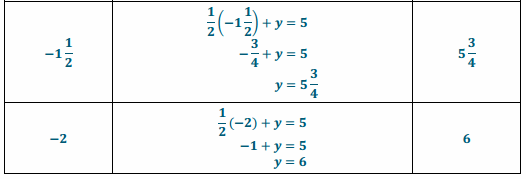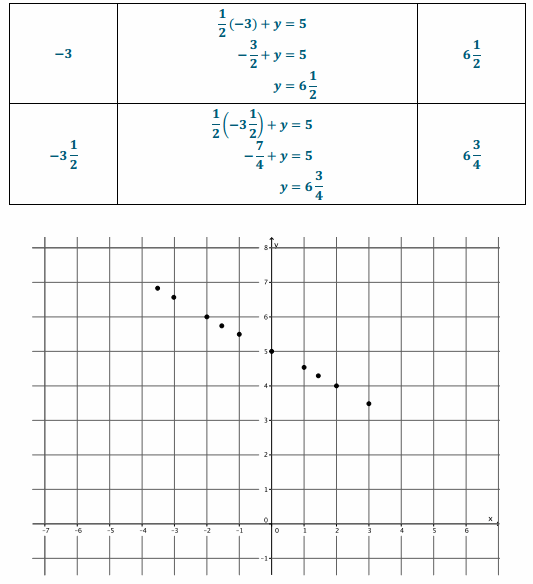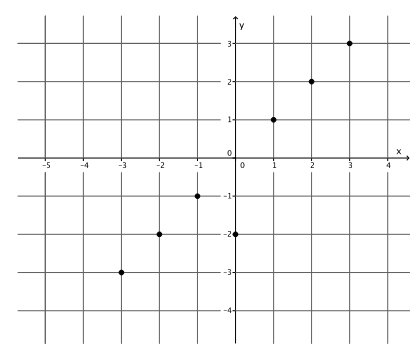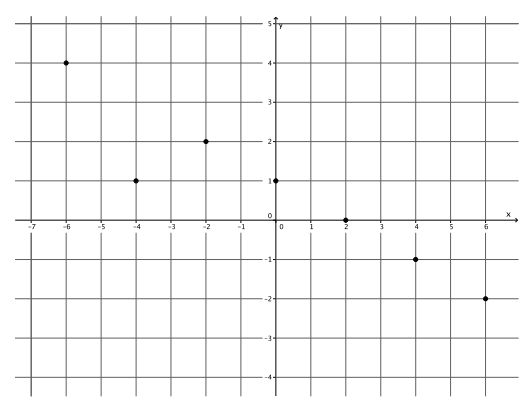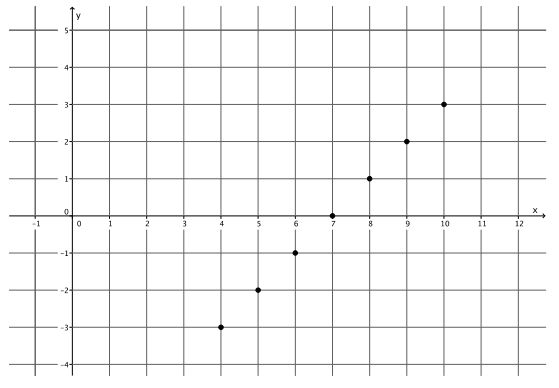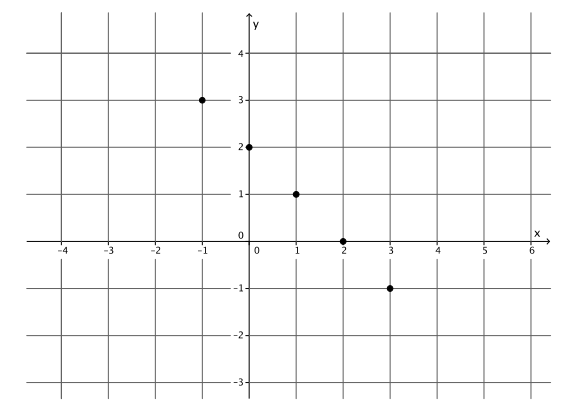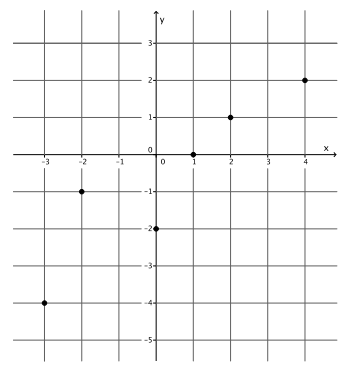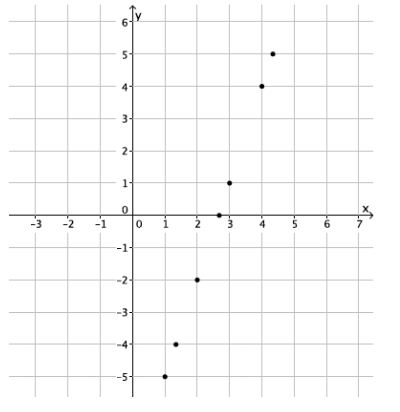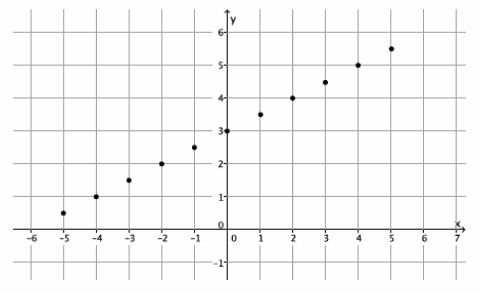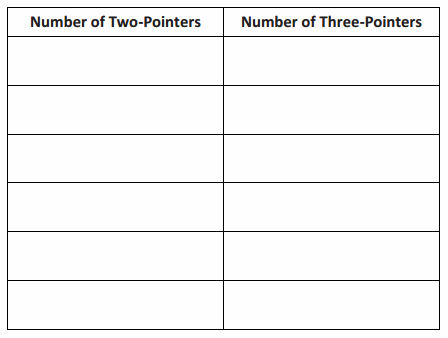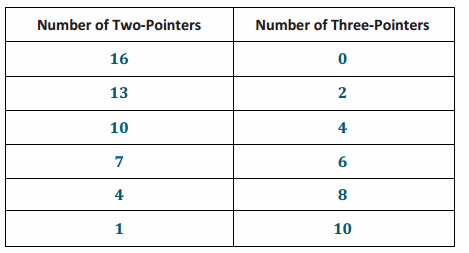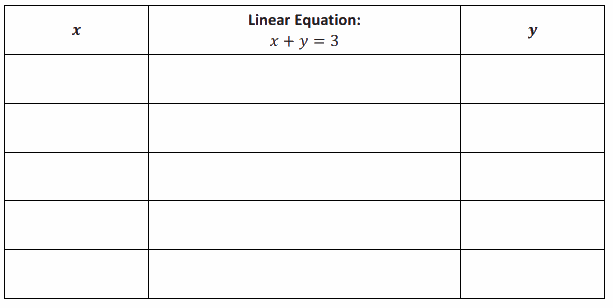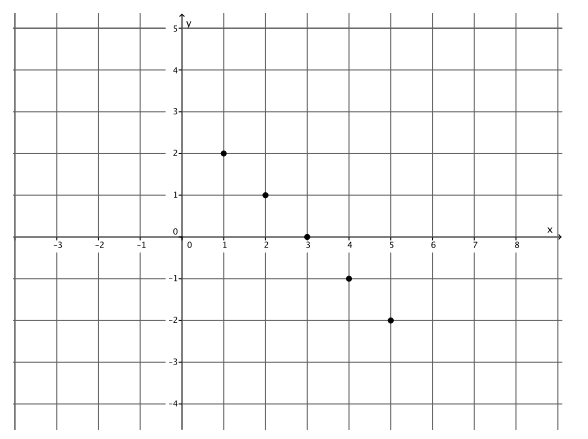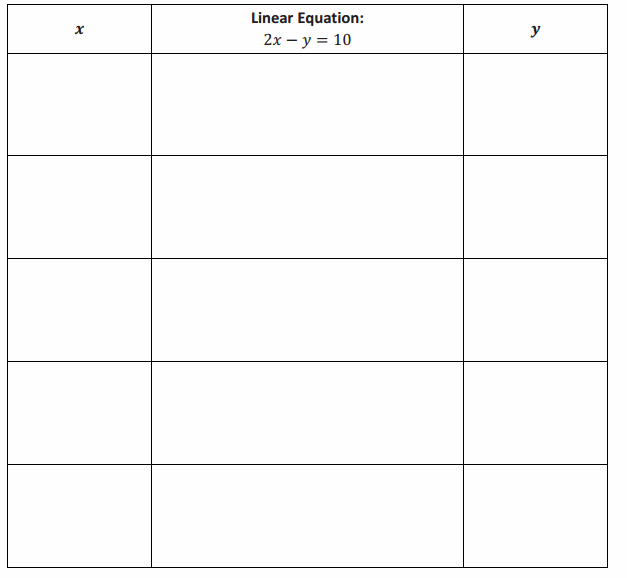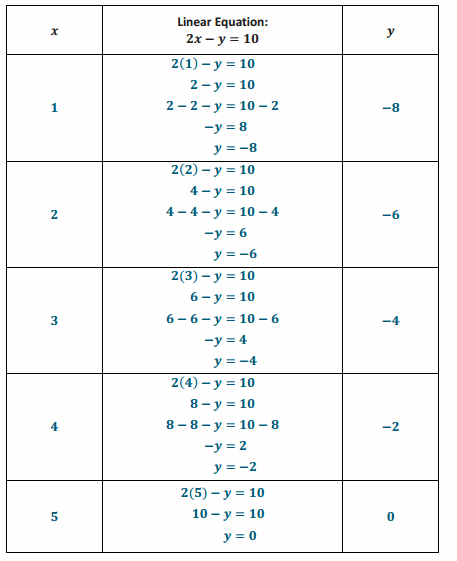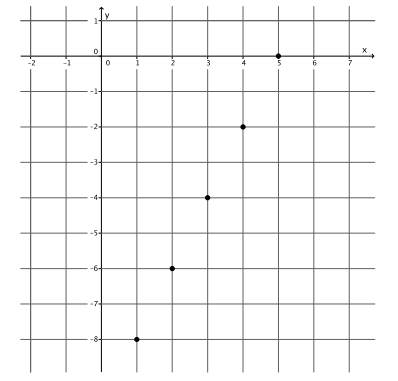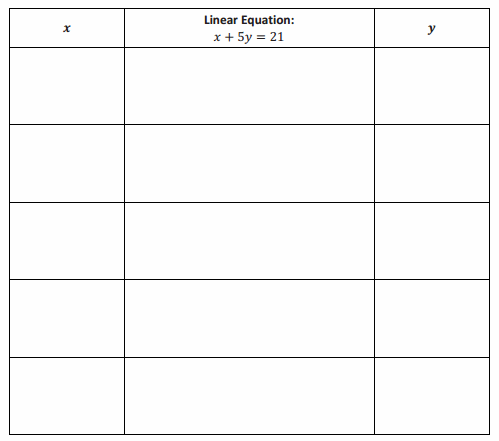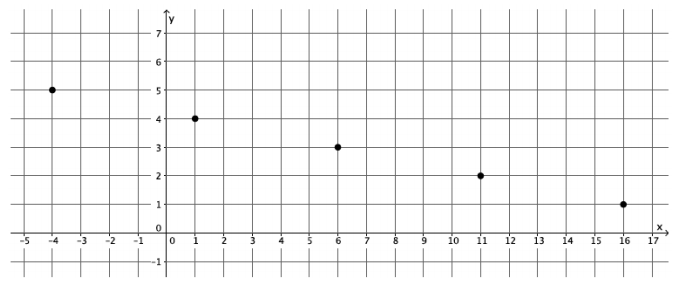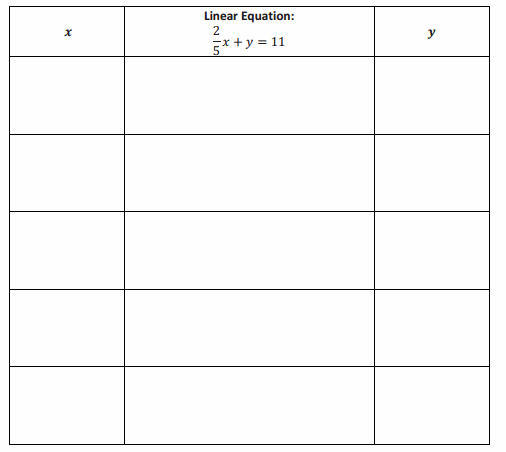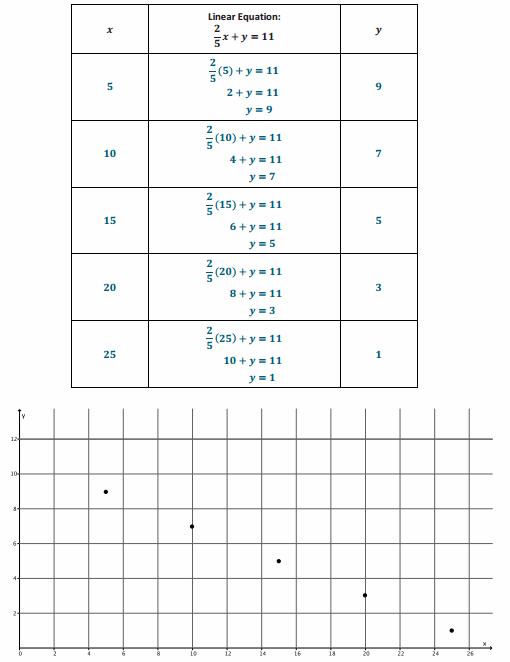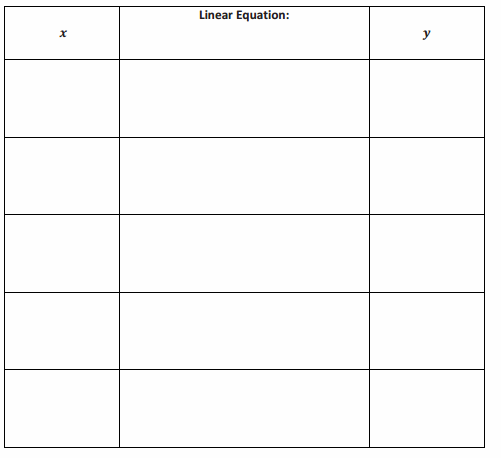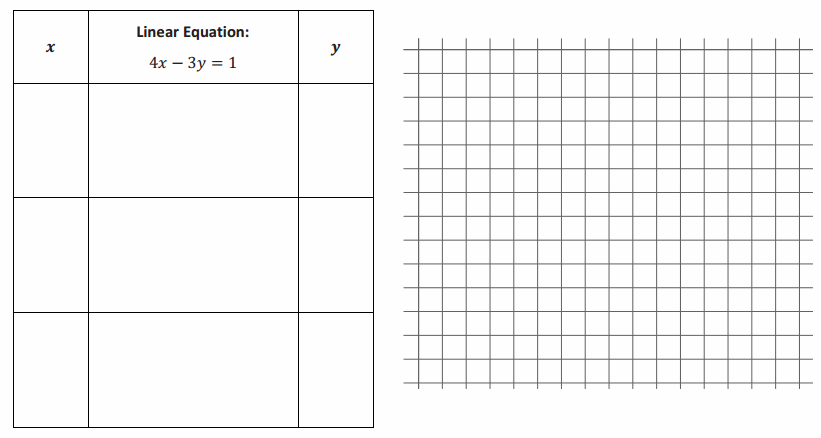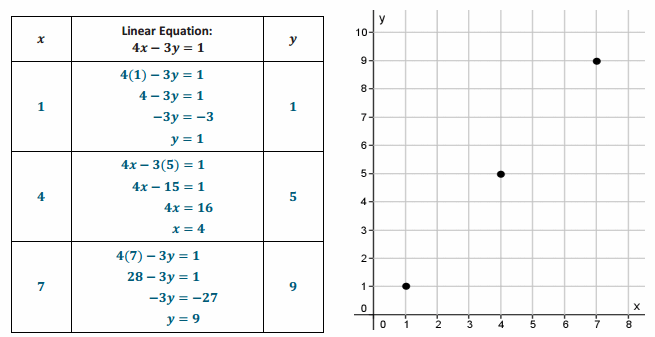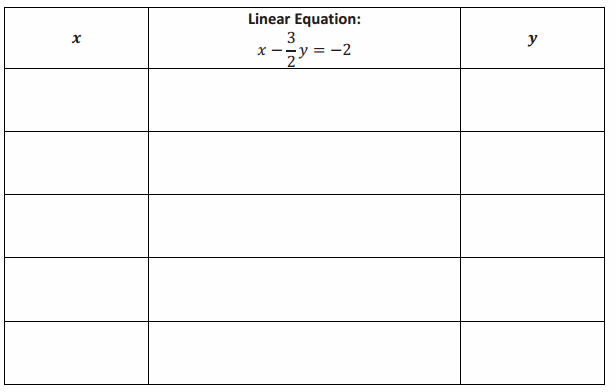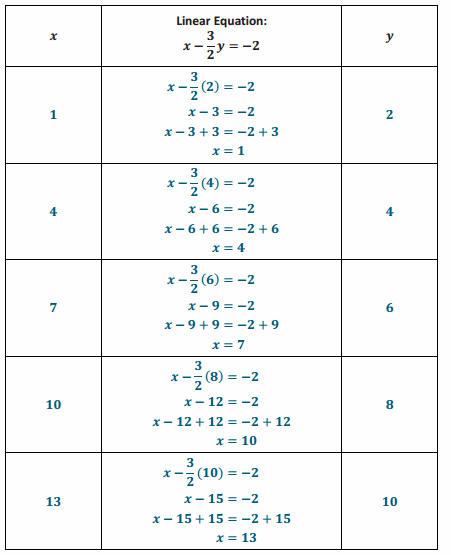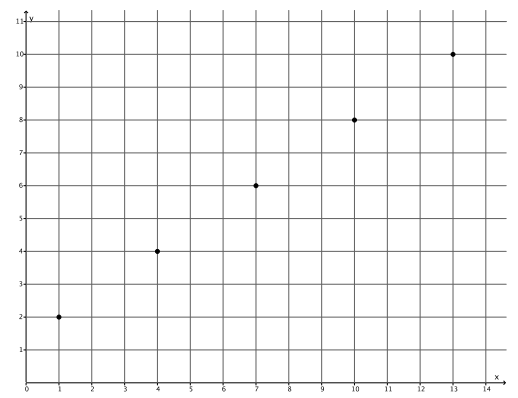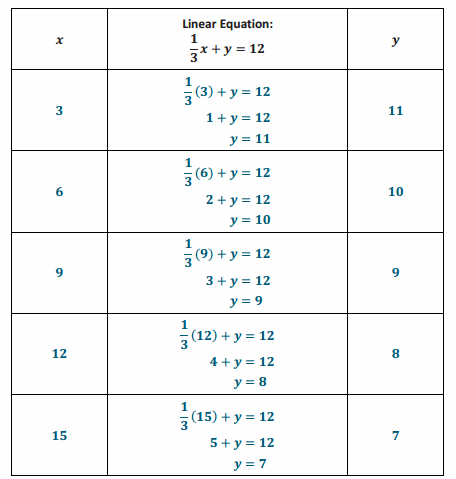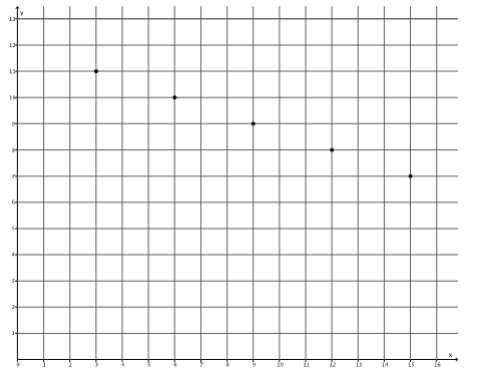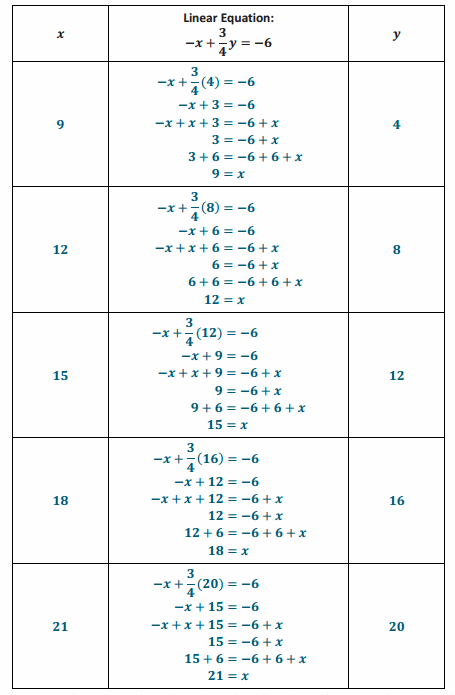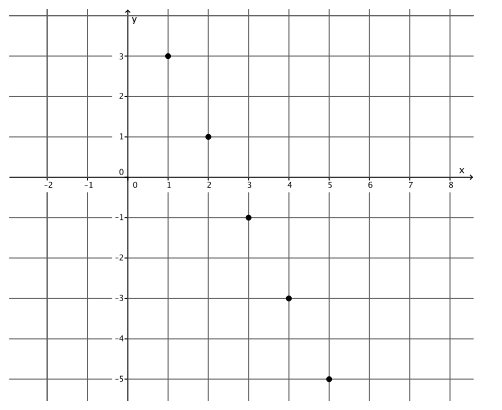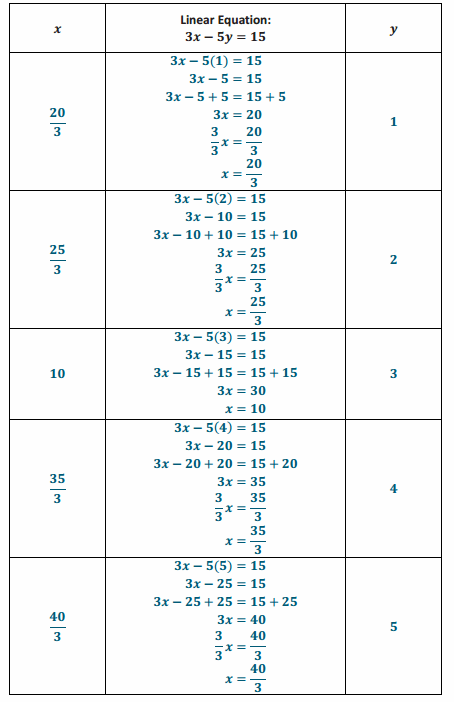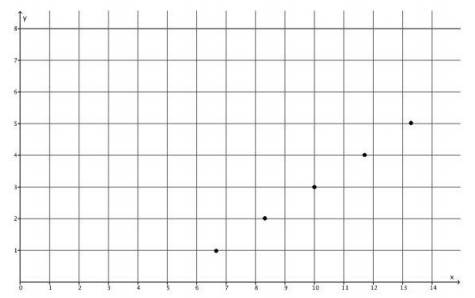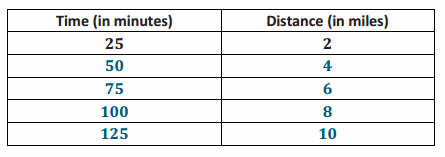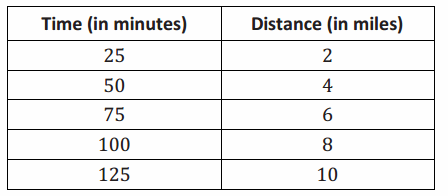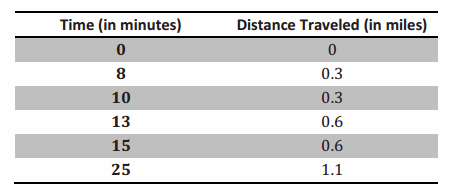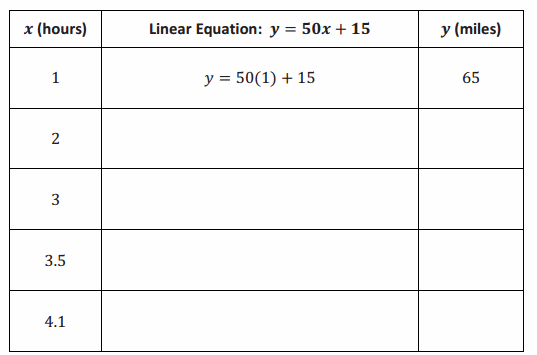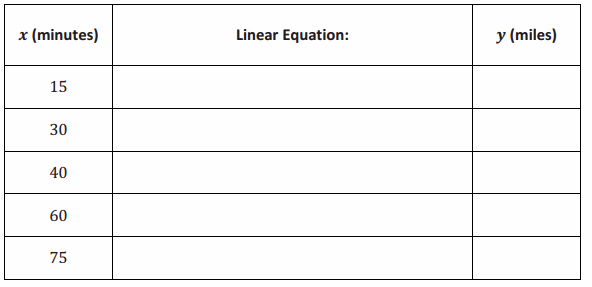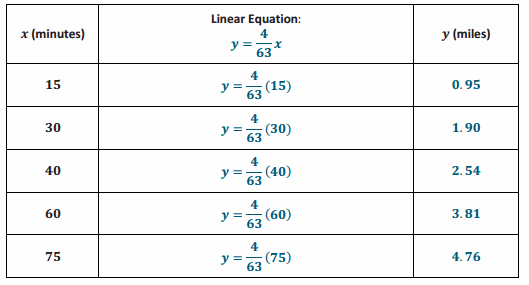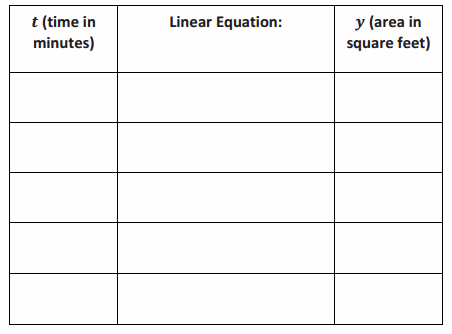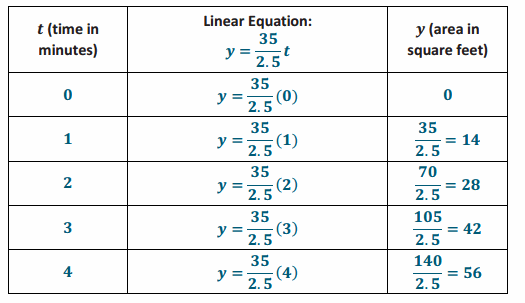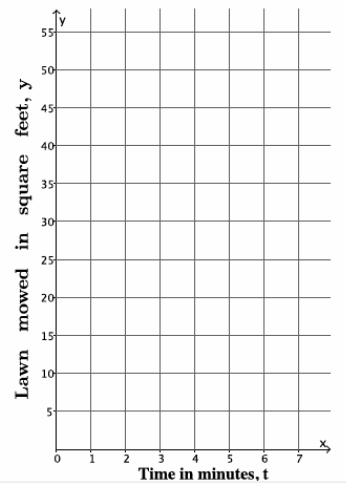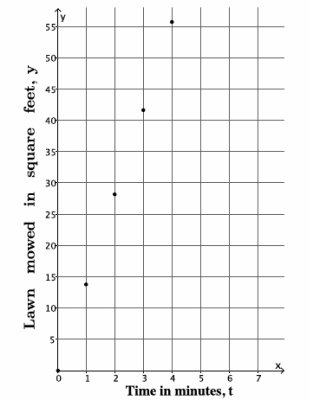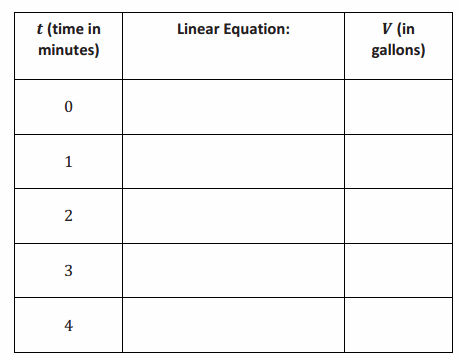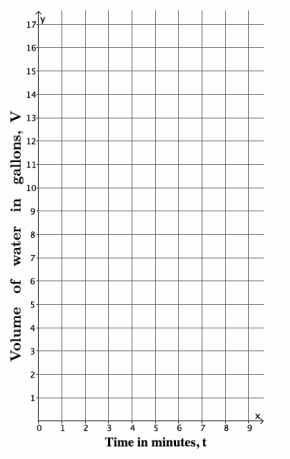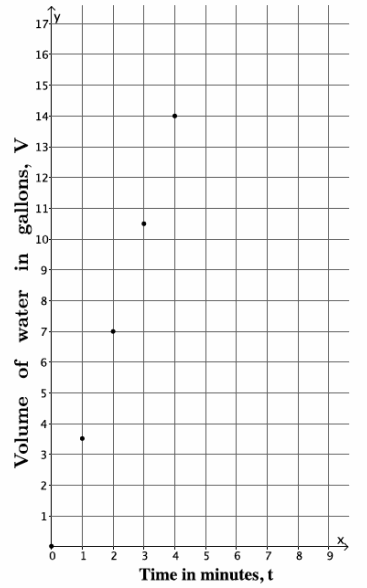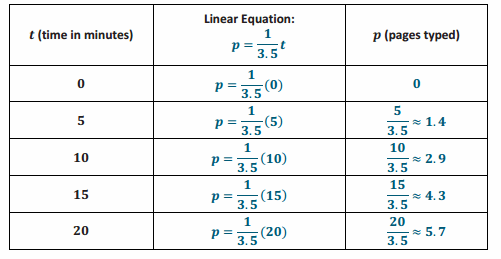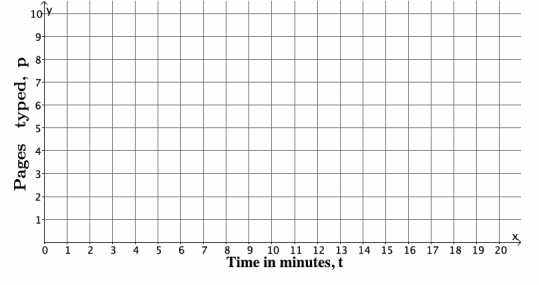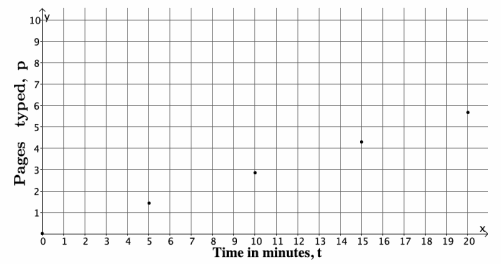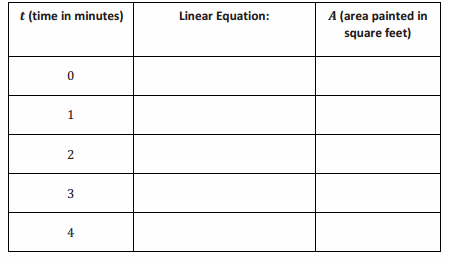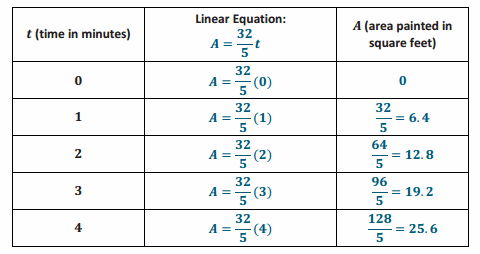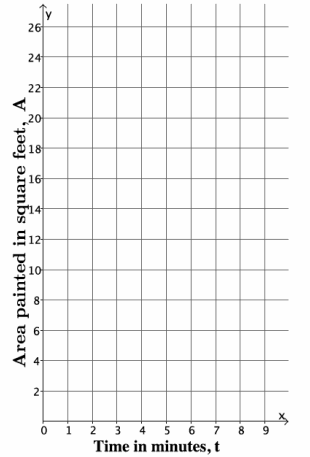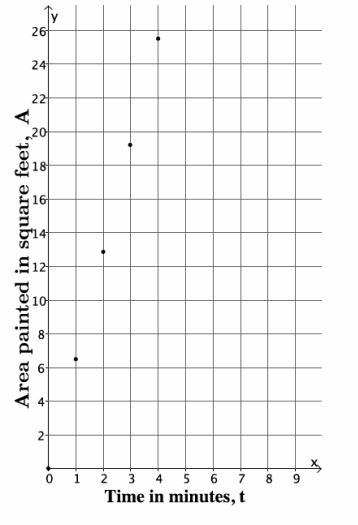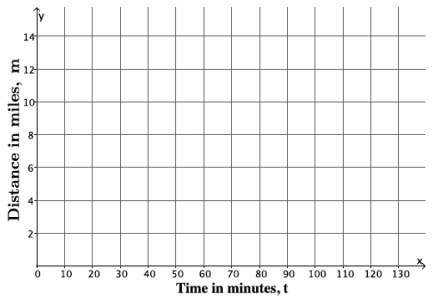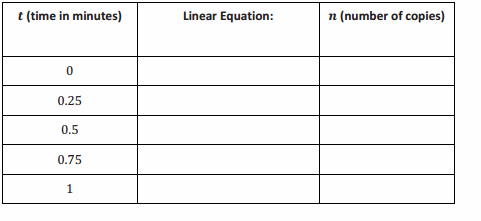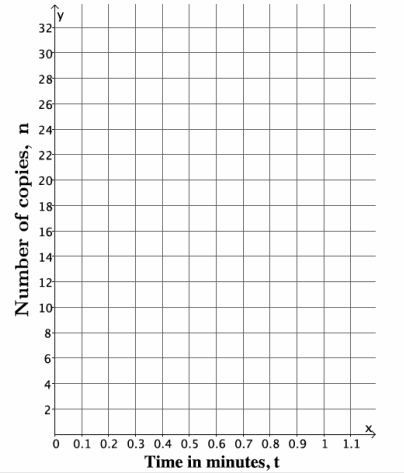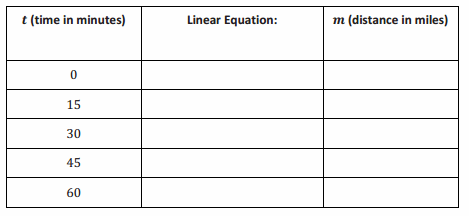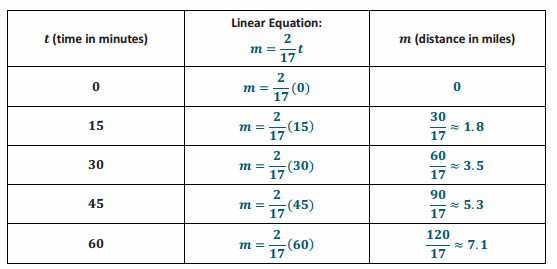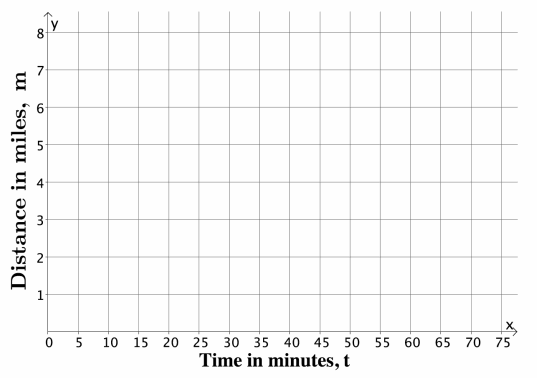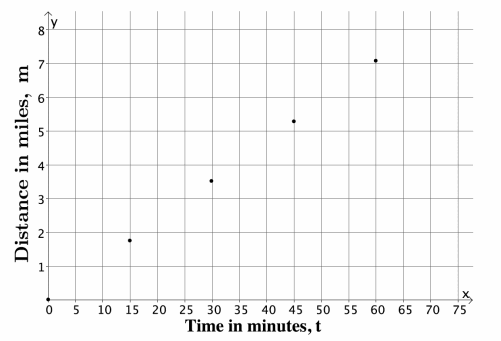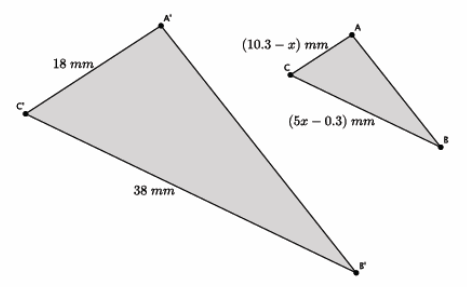Engage NY Eureka Math 8th Grade Module 4 Lesson 17 Answer Key
Eureka Math Grade 8 Module 4 Lesson 17 Exercise Answer Key
Exercise 1.
Find at least three solutions to the equation y=2x, and graph the solutions as points on the coordinate plane. Connect the points to make a line. Find the slope of the line.

Answer:
The slope of the line is 2; m=2.
Exercise 2.
Find at least three solutions to the equation y=3x-1, and graph the solutions as points on the coordinate plane. Connect the points to make a line. Find the slope of the line.
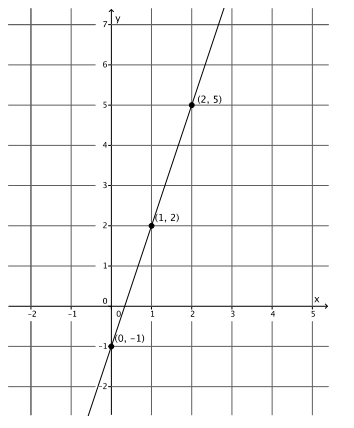
Answer:
The slope of the line is 3; m=3.
Exercise 3.
Find at least three solutions to the equation y=3x+1, and graph the solutions as points on the coordinate plane. Connect the points to make a line. Find the slope of the line.
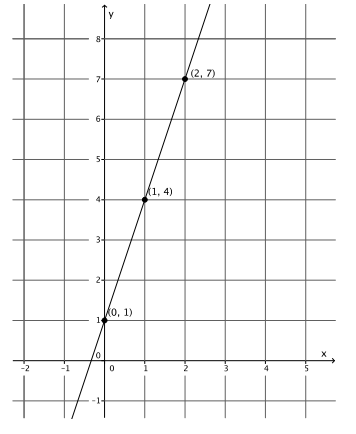
Answer:
The slope of the line is 3; m=3.
Exercises 4–11
Students work independently or in pairs to identify the slope from an equation and to transform the standard form of an equation into slope-intercept form.
Exercise 4.
The graph of the equation y=7x-3 has what slope?
Answer:
The slope is 7.
Exercise 5.
The graph of the equation y=-\(\frac{3}{4}\) x-3 has what slope?
Answer:
The slope is –\(\frac{3}{4}\).
Exercise 6.
You have $20 in savings at the bank. Each week, you add $2 to your savings. Let y represent the total amount of money you have saved at the end of x weeks. Write an equation to represent this situation, and identify the slope of the equation. What does that number represent?
Answer:
y=2x+20
The slope is 2. It represents how much money is saved each week.
Exercise 7.
A friend is training for a marathon. She can run 4 miles in 28 minutes. Assume she runs at a constant rate. Write an equation to represent the total distance, y, your friend can run in x minutes. Identify the slope of the equation. What does that number represent?
Answer:
\(\frac{y}{x}\)=\(\frac{4}{28}\)
y=\(\frac{4}{28}\) x
y=\(\frac{1}{7}\) x
The slope is \(\frac{1}{7}\). It represents the rate at which my friend can run, one mile in seven minutes.
Exercise 8.
Four boxes of pencils cost $5. Write an equation that represents the total cost, y, for x boxes of pencils. What is the slope of the equation? What does that number represent?
Answer:
y=\(\frac{5}{4}\) x
The slope is \(\frac{5}{4}\). It represents the cost of one box of pencils, $1.25.
Exercise 9.
Solve the following equation for y, and then identify the slope of the line: 9x-3y=15.
Answer:
9x-3y=15
9x-9x-3y=15-9x
-3y=15-9x
\(\frac{-3}{-3}\) y=\(\frac{15-9 x}{-3}\)
y=\(\frac{15}{-3}\)–\(\frac{9 x}{-3}\)
y=-5+3x
y=3x-5
The slope of the line is 3.
Exercise 10.
Solve the following equation for y, and then identify the slope of the line: 5x+9y=8.
Answer:
5x+9y=8
5x-5x+9y=8-5x
9y=8-5x
\(\frac{9}{\mathbf{9}}\) y=\(\frac{8-5 x}{9}\)
y=\(\frac{8}{9}\)–\(\frac{5}{9}\)x
y=-\(\frac{5}{9}\)x+\(\frac{8}{9}\)
The slope of the line is –\(\frac{5}{9}\).
Question 11.
Solve the following equation for y, and then identify the slope of the line: ax+by=c.
Answer:
ax+by=c
ax-ax+by=c-ax
by=c-ax
\(\frac{b}{b}\) y=\(\frac{c-a x}{b}\)
y=\(\frac{c}{b}\)–\(\frac{ax}{b}\)
y=\(\frac{c}{b}\)–\(\frac{a}{b}\) x
y=-\(\frac{a}{b}\) x+\(\frac{c}{b}\)
The slope of the line is –\(\frac{a}{b}\).
Eureka Math Grade 8 Module 4 Lesson 17 Problem Set Answer Key
Students practice transforming equations from standard form into slope-intercept form and showing that the line joining two distinct points of the graph y=mx+b has slope m. Students graph the equation and informally note the y-intercept.
Question 1.
Solve the following equation for y: -4x+8y=24. Then, answer the questions that follow.
Answer:
-4x+8y=24
-4x+4x+8y=24+4x
8y=24+4x
\(\frac{8}{8}\) y=\(\frac{24}{8}\)+\(\frac{4}{8}\) x
y=3+\(\frac{1}{2}\) x
y=\(\frac{1}{2}\) x+3
a. Based on your transformed equation, what is the slope of the linear equation -4x+8y=24?
Answer:
The slope is \(\frac{1}{2}\).
b. Complete the table to find solutions to the linear equation.

Answer:
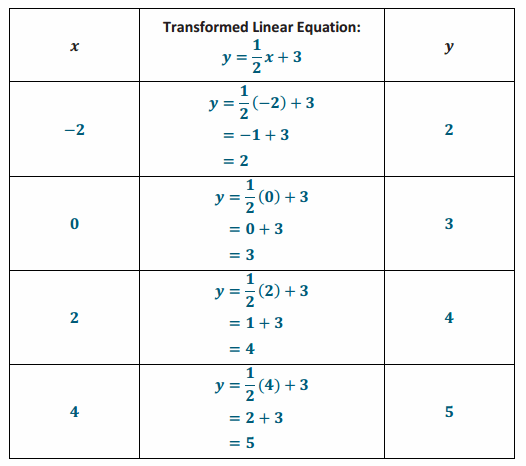
c. Graph the points on the coordinate plane.
Answer:
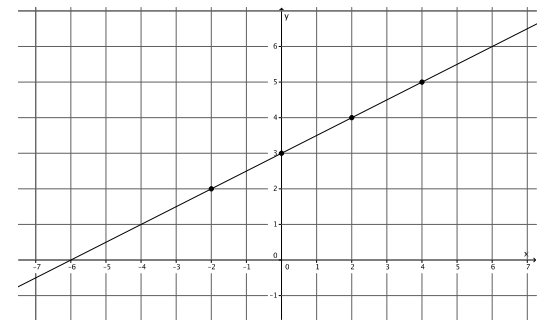
d. Find the slope between any two points.
Answer:
Using points (0,3) and (2,4):
m=\(\frac{4-3}{2-0}\)
=\(\frac{1}{2}\)
e. The slope you found in part (d) should be equal to the slope you noted in part (a). If so, connect the points to make the line that is the graph of an equation of the form y=mx+b that has slope m.
f. Note the location (ordered pair) that describes where the line intersects the y-axis.
Answer:
(0,3) is the location where the line intersects the y-axis.
Question 2.
Solve the following equation for y: 9x+3y=21. Then, answer the questions that follow.
Answer:
9x+3y=21
9x-9x+3y=21-9x
3y=21-9x
\(\frac{3}{3}\) y=\(\frac{21}{3}\)–\(\frac{9}{3}\) x
y=7-3x
y=-3x+7
a. Based on your transformed equation, what is the slope of the linear equation 9x+3y=21?
Answer:
The slope is -3.
b. Complete the table to find solutions to the linear equation.
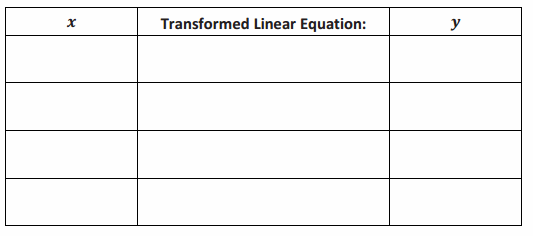
Answer:
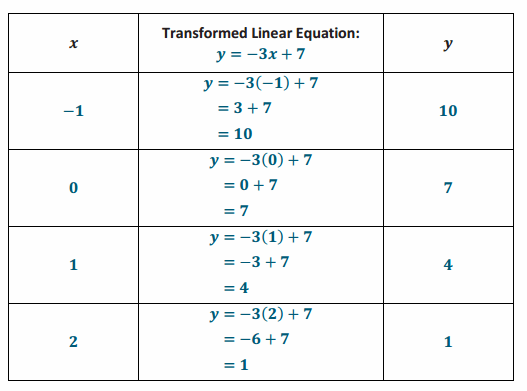
c. Graph the points on the coordinate plane.
Answer:
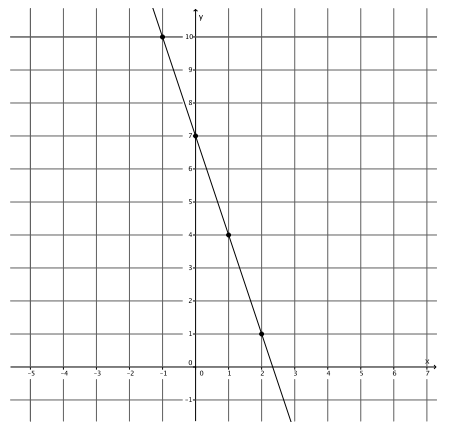
d. Find the slope between any two points.
Answer:
Using points (1,4) and (2,1):
m=\(\frac{4-1}{1-2}\)
=\(\frac{3}{-1}\)
=-3
e. The slope you found in part (d) should be equal to the slope you noted in part (a). If so, connect the points to make the line that is the graph of an equation of the form y=mx+b that has slope m.
f. Note the location (ordered pair) that describes where the line intersects the y-axis.
Answer:
(0,7) is the location where the line intersects the y-axis.
Question 3.
Solve the following equation for y: 2x+3y=-6. Then, answer the questions that follow.
Answer:
2x+3y=-6
2x-2x+3y=-6-2x
3y=-6-2x
\(\frac{3}{3}\) y=\(\frac{-6}{3}\)–\(\frac{2}{3}\) x
y=-2-\(\frac{2}{3}\) x
y=-\(\frac{2}{3}\) x-2
a. Based on your transformed equation, what is the slope of the linear equation 2x+3y=-6?
Answer:
The slope is –\(\frac{2}{3}\).
b. Complete the table to find solutions to the linear equation.
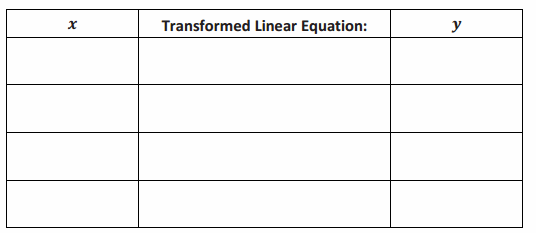
Answer:

c. Graph the points on the coordinate plane.
Answer:
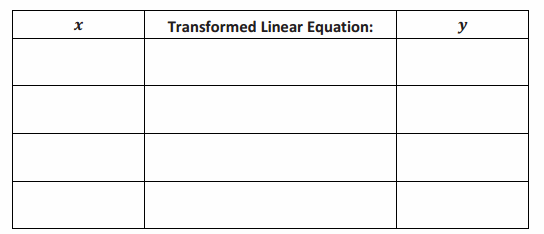
d. Find the slope between any two points.
Answer:
Using points (-6,2) and (3,-4):
m=\(\frac{2-(-4)}{-6-3}\)
=\(\frac{6}{-9}\)
=-\(\frac{2}{3}\)
e. The slope you found in part (d) should be equal to the slope you noted in part (a). If so, connect the points to make the line that is the graph of an equation of the form y=mx+b that has slope m.
f. Note the location (ordered pair) that describes where the line intersects the y-axis.
Answer:
(0,-2) is the location where the line intersects the y-axis.
Question 4.
Solve the following equation for y: 5x-y=4. Then, answer the questions that follow.
Answer:
5x-y=4
5x-5x-y=4-5x
-y=4-5x
y=-4+5x
y=5x-4
a. Based on your transformed equation, what is the slope of the linear equation 5x-y=4?
Answer:
The slope is 5.
b. Complete the table to find solutions to the linear equation.

Answer:
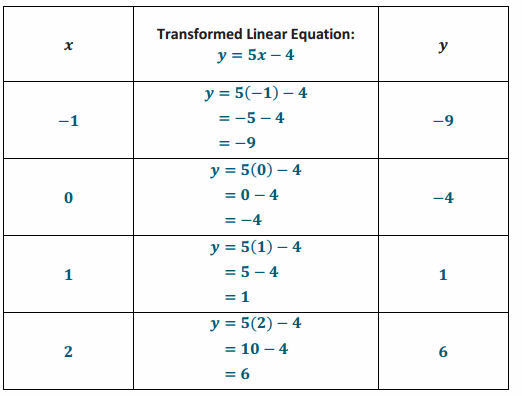
c. Graph the points on the coordinate plane.
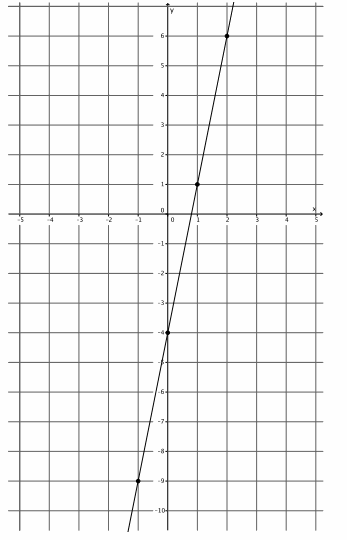
d. Find the slope between any two points.
Answer:
Using points (0,-4) and (1,1):
m=\(\frac{-4-1}{0-1}\)
=\(\frac{-5}{-1}\)
=5
e. The slope you found in part (d) should be equal to the slope you noted in part (a). If so, connect the points to make the line that is the graph of an equation of the form y=mx+b that has slope m.
f. Note the location (ordered pair) that describes where the line intersects the y-axis.
Answer:
(0,-4) is the location where the line intersects the y-axis.
Eureka Math Grade 8 Module 4 Lesson 17 Exit Ticket Answer Key
Question 1.
Solve the following equation for y: 35x-7y=49.
Answer:
35x-7y=49
35x-35x-7y=49-35x
-7y=49-35x
\(\frac{-7}{-7}\) y=\(\frac{49}{-7}\)–\(\frac{35}{-7}\) x
y=-7-(-5x)
y=5x-7
Question 2.
What is the slope of the equation in Problem 1?
Answer:
The slope of y=5x-7 is 5.
Question 3.
Show, using similar triangles, why the graph of an equation of the form y=mx is a line with slope m.
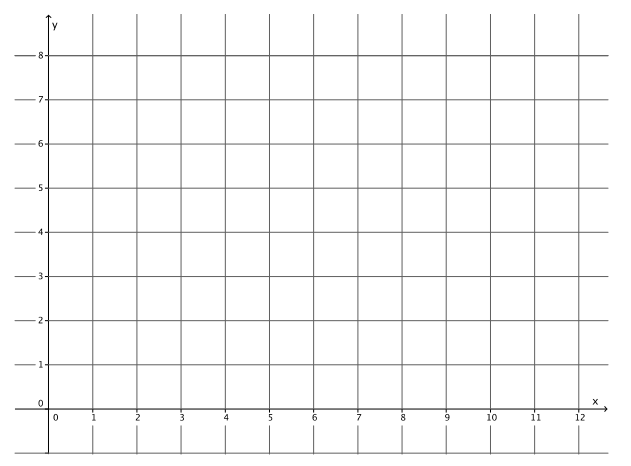
Answer:
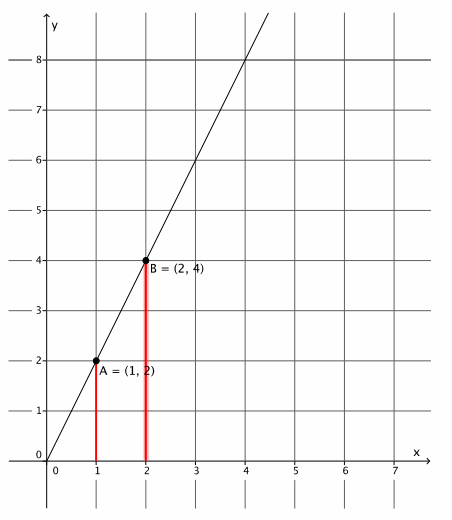
Solutions will vary. A sample solution is shown below.
The line shown has slope 2. When we compare the corresponding side lengths of the similar triangles, we have the ratios \(\frac{2}{1}\)=\(\frac{4}{2}\)=2. In general, the ratios would be \(\frac{x}{1}\)=\(\frac{y}{m}\), equivalently y=mx, which is a line with slope m.
